Contents
Growing an excellent crop of tomatoes in greenhouse conditions is the dream of every experienced and novice gardener. With proper care, you can count on a timely and rich tomato crop. But in the process of growing them, vegetable crops can lie in wait for unpleasant diseases, so summer residents should be aware of the main diseases of tomatoes in the greenhouse and methods for effectively combating them.
Care of tomatoes
Approaches to growing tomatoes in open ground and greenhouses differ in many ways. For planting in a greenhouse, those varieties that are most adapted to our climatic conditions are suitable. The special microclimate inside the greenhouse, proper care of tomatoes have a beneficial effect on the normal growth and development of crops. A greenhouse for growing tomatoes should be quite spacious, have several windows for ventilation, which is especially important for plants during flowering and fruiting. Recently, greenhouses made of modern polycarbonate material have gained wide popularity, in which it is possible to create favorable conditions for growing tomatoes. Tomatoes that appeared in greenhouse conditions with normal care, without the addition of excess fertilizers and growth stimulants, have the same excellent taste properties as those grown in natural conditions.
Since tomatoes are very demanding on heat, the room should first of all create the desired temperature, which should be about 22 – 24 degrees. It is also necessary to take care of sufficient greenhouse lighting, because if it is not enough, the tomatoes will certainly develop poorly, their leaves will turn pale, the buds will fall off, and the stems will stretch. In order to stimulate good tomato growth in the greenhouse, special artificial lighting is created, as close as possible to their usual natural lighting, which has a positive effect on the quality of seedlings and a good harvest in the future.
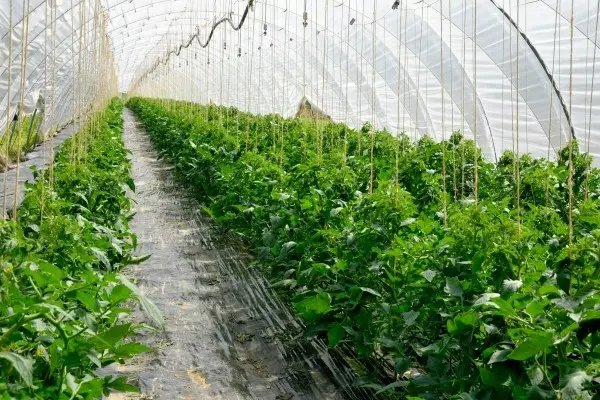 In early spring and late autumn, it is recommended to carry out gas disinfection indoors, using sulfuric smoke bombs for this. Before starting this event, all the cracks that will be found in the greenhouse structure must be carefully closed. An important role in the formation of future high-quality tomatoes is played by soil preparation, for which the top layer and the remains of previous plants are removed in the fall, after which they are watered with copper sulfate or Bordeaux liquid. Apply complex fertilizers and dig. After high-quality heated and chemically treated seeds are planted in prepared boxes, seedlings will appear from them in due time and after that you can start planting them in the ground and subsequent care.
In early spring and late autumn, it is recommended to carry out gas disinfection indoors, using sulfuric smoke bombs for this. Before starting this event, all the cracks that will be found in the greenhouse structure must be carefully closed. An important role in the formation of future high-quality tomatoes is played by soil preparation, for which the top layer and the remains of previous plants are removed in the fall, after which they are watered with copper sulfate or Bordeaux liquid. Apply complex fertilizers and dig. After high-quality heated and chemically treated seeds are planted in prepared boxes, seedlings will appear from them in due time and after that you can start planting them in the ground and subsequent care.
Two weeks after planting young tomatoes, the soil around them should be carefully loosened. After 12 – 14 days, it is necessary to feed vegetable crops for the first time, using peat mixed with humus and soddy soil. This procedure for caring for plants will enable them to begin intensive growth and development. After waiting another couple of weeks, the soil is fertilized with a mixture of humus, turf and peat again. 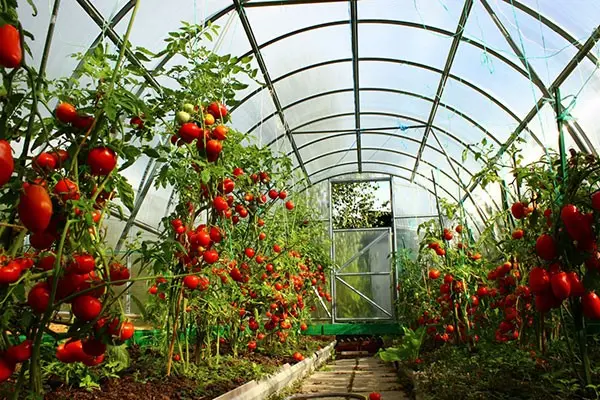 To this top dressing, it is also necessary to add slaked lime at the rate of 65 grams per 10 liters of water. At the end of a month after the first stage of diving seedlings, the tomato follows the second, in which young crops are planted in wide rows. Along the planted tomatoes, it is necessary to provide special grooves, which will then be used for irrigation.
To this top dressing, it is also necessary to add slaked lime at the rate of 65 grams per 10 liters of water. At the end of a month after the first stage of diving seedlings, the tomato follows the second, in which young crops are planted in wide rows. Along the planted tomatoes, it is necessary to provide special grooves, which will then be used for irrigation.
It is believed that it is not necessary to water the tomatoes after sunset, since at night the soil can cool more strongly. Experts advise instead of outdated irrigation systems using a watering can or bucket to use modern ones – automated, capable of not only controlling the entire process on their own, but also turning on and off independently.
Caring for tomatoes during the period of intensive stem growth involves pruning and tying them. This method of growing tomatoes is commonly called trellis.  By shaping the bushes in this way, you provide your tomatoes with a good ventilation system and optimal lighting. It is necessary to cut the stems so that after carrying out the manipulations, no more than three strong shoots remain on the bush. In this case, any intermediate processes should be removed. Tie up tomatoes so as not to disturb their normal development.
By shaping the bushes in this way, you provide your tomatoes with a good ventilation system and optimal lighting. It is necessary to cut the stems so that after carrying out the manipulations, no more than three strong shoots remain on the bush. In this case, any intermediate processes should be removed. Tie up tomatoes so as not to disturb their normal development.
Further, caring for tomatoes will require you only to remove fat shoots in a timely manner, as well as to correct garters and supports if necessary. In the process of caring for and growing crops, one should not forget about pollination. With the onset of warm days, bees will gladly take over this function, which will be able to enter your greenhouse with the help of a window, looking for a prudently suspended container with jam or sugar syrup.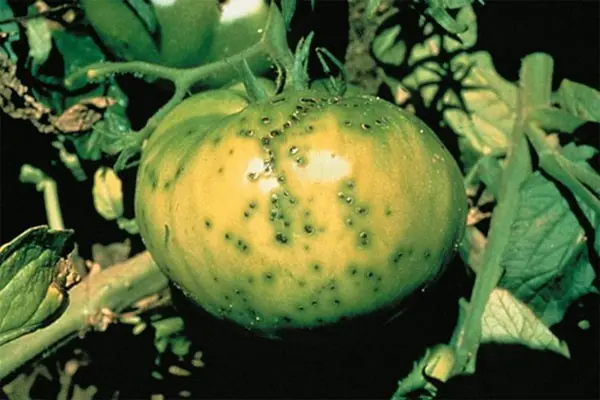
Possible diseases and methods of dealing with them
The main enemies of tomatoes growing in greenhouse conditions are viruses, bacteria, fungi and insects. Even with proper cultivation and care of vegetable crops, you are unlikely to avoid the occurrence of any of the unpleasant diseases. Therefore, it is necessary to have information about all the ailments that tomatoes can overcome, and try to meet them fully armed in order to give a timely rebuff.
One of the diseases is late blight. It is caused by a special microscopic fungus that spreads throughout the plant in a short time. Signs of this disease are the presence of a characteristic white coating on the underside of the leaves, brown spots on them and stems, as well as brown subcutaneous spots. 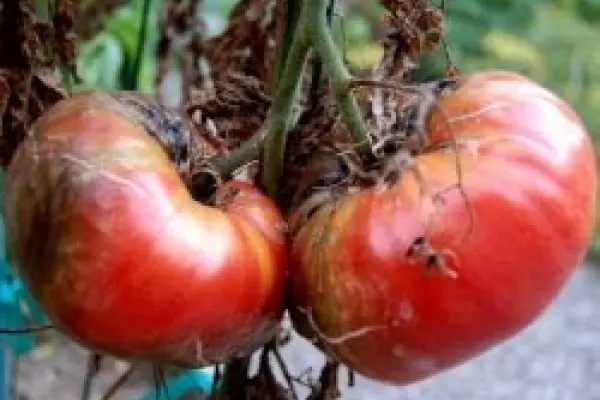 The spread of the disease is facilitated by high humidity and temperature fluctuations. For prevention, three weeks after planting, it is customary to treat seedlings with the Barrier solution, and after another three weeks with the Barrier preparation. Treatment is carried out with Oksikhom, for which a couple of tablets are diluted in 10 liters of water.
The spread of the disease is facilitated by high humidity and temperature fluctuations. For prevention, three weeks after planting, it is customary to treat seedlings with the Barrier solution, and after another three weeks with the Barrier preparation. Treatment is carried out with Oksikhom, for which a couple of tablets are diluted in 10 liters of water.
If the green fruits of tomatoes suddenly become covered with watery, rotten smell or black sunken spots, the plants are affected by blossom end rot. Its causes can easily be a lack of calcium, excessive nitrogen content in the soil, as well as insufficient watering of tomatoes. In order to prevent the occurrence of this unpleasant phenomenon, proper care when growing vegetables involves sufficient watering of crops, which is especially important on hot days. If the culture is already sick, it must be treated with a nitrate solution as soon as possible. To make it, you need to dissolve a tablespoon of calcium nitrate in 10 liters of water. Those fruits that can no longer be cured due to severe disease damage are best burned.
Leaf mold is also a disease quite familiar to many gardeners who decide to grow tomatoes in a polycarbonate greenhouse. Such an ailment is characterized by the presence of brown-brown spots on the leaves, after which the leaves inevitably dry out. The spores of this dangerous fungus can be transferred from crop to crop during the irrigation procedure, and also remain in the soil, on last year’s leaves. 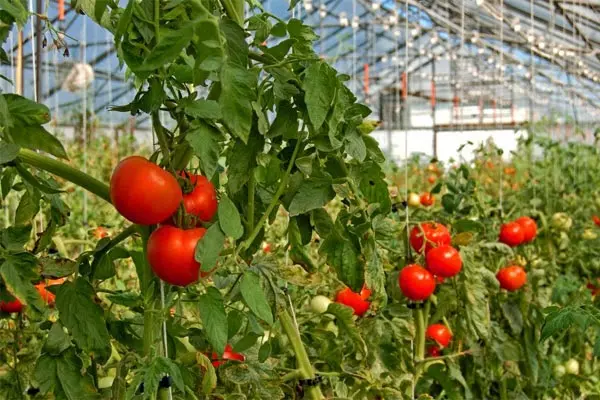 Control measures include a decrease in air humidity, a decrease in the number of irrigations, as well as an increase in indoor temperature. For the prevention of plants, it is recommended to treat with copper oxychloride at the rate of 40 grams per 10 liters of water, spray with Oksikhom, Barrier, and Zaslon preparations. It also helps to disinfect the greenhouse after harvesting vegetables with copper sulfate.
Control measures include a decrease in air humidity, a decrease in the number of irrigations, as well as an increase in indoor temperature. For the prevention of plants, it is recommended to treat with copper oxychloride at the rate of 40 grams per 10 liters of water, spray with Oksikhom, Barrier, and Zaslon preparations. It also helps to disinfect the greenhouse after harvesting vegetables with copper sulfate.
Another type of trouble is a tomato disease called mosaic. It is caused by special varieties of viruses and can lead to the death of crops. Its main features are shriveled leaves with yellowish-green spots of an atypical shape, the general unsatisfactory condition of the plant, as a result of which both it and the crop die. To combat the disease, it is customary to remove the affected crops and burn them. Seed dressing with a solution of potassium permanganate has proven itself well. The seedlings should be watered with the same solution, taking breaks for about three weeks. Prevention measures include treating seedlings with skim milk every one and a half weeks. To do this, a liter of milk must be diluted in 10 liters of water and add one teaspoon of urea. 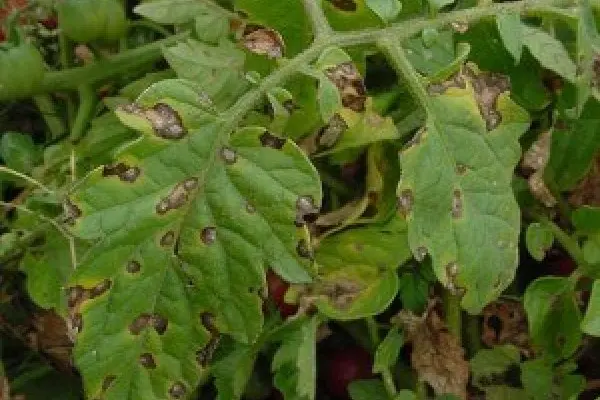 Stepson tomatoes, you do not need to touch the juice of plants, as the disease can be transmitted through it.
Stepson tomatoes, you do not need to touch the juice of plants, as the disease can be transmitted through it.
Gray fruit rot can also appear even with proper crop care, as this disease is caused by fungi. Most often, it occurs at the end of the growing season, and the signs are small spots that become larger and begin to release a brown liquid.
You can also observe the appearance of gray rot, which most often occurs in tomatoes that are grown in polycarbonate greenhouses. To combat this type of disease, it is necessary to increase the temperature indicators, remove the fruits and particles of the culture affected by the disease, treat the diseased fruits with means called Fundazol, “Barrier”, “Barrier”.
Root rot causes crops to wilt as the root of the plant begins to rot. To combat it, it is necessary to treat the soil using a solution of copper sulfate, then remove the affected area of uXNUMXbuXNUMXbthe earth and add a fresh one instead, and a good effect is also achieved when treated with the “Barrier” and “Barrier” agents.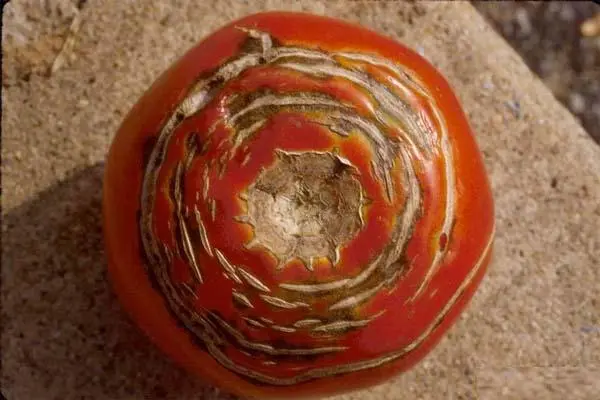
Brown rot or phomosis is spread by fungi. Visually, a brown spot is visible on the fruits, and with the development of the disease, green tomatoes fall off. For prevention, excessive soil moisture should be prevented, the soil should be disinfected, and affected fruits and vegetables should be collected and destroyed.
Dry spotting or macrosporiosis is a disease in which large brown spots are clearly visible on the fruits, and diseased leaves fall off. Also characteristic of this disease is black plaque. Control measures are similar to those used in the defeat of late blight.
Fruit cracking is a physiological disease. It can occur when crops are over-watered on dry days. To fight, it is necessary to carry out uniform watering of the soil, on hot days, spray with a solution of lime.
Tomatoes are often attacked by insects.
Medvedka, which digs huge holes and is capable of causing irreparable harm to the crop. To combat it, tinctures of table vinegar and hot pepper are poured into the minks. It is also customary to use the purchase tool “Thunder”. Wireworms are also very annoying to vegetable crops – caterpillars that destroy stems and roots. 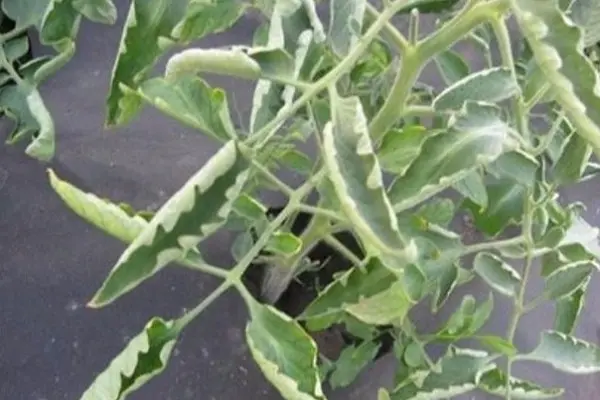 To combat them, vegetables are strung on sticks buried in the ground, on which caterpillars accumulate. When digging up the earth in a greenhouse, they also need to be collected and eliminated. The introduction of mineral dressings and the addition of lime to the soil will also reduce the number of pests. In greenhouse conditions, tomatoes can also be attacked by whiteflies and cutworms. To combat the first type of caterpillars, Citcor and Phosbecid are successfully used. To resist the latter, it is necessary to destroy the weeds in the greenhouse in a timely manner, dig the soil well, and carry out the treatment with the Strela preparation.
To combat them, vegetables are strung on sticks buried in the ground, on which caterpillars accumulate. When digging up the earth in a greenhouse, they also need to be collected and eliminated. The introduction of mineral dressings and the addition of lime to the soil will also reduce the number of pests. In greenhouse conditions, tomatoes can also be attacked by whiteflies and cutworms. To combat the first type of caterpillars, Citcor and Phosbecid are successfully used. To resist the latter, it is necessary to destroy the weeds in the greenhouse in a timely manner, dig the soil well, and carry out the treatment with the Strela preparation.
Video “Diseases of tomatoes”
The video is dedicated to such a tomato disease as late blight. Watch the recording and learn how to protect tomatoes from this disease.









